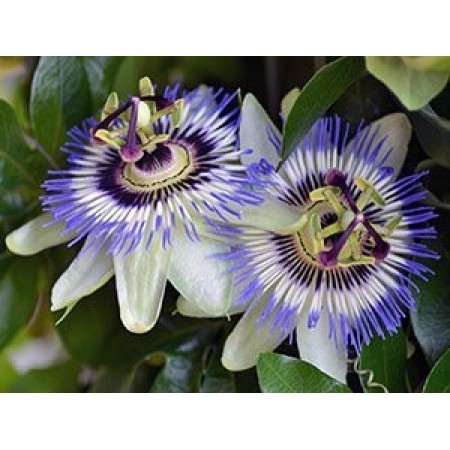Passiflora cultivation

Passiflora is an exotic plant whose natural habitat is the tropical forests of Australia and America. This flower is not too whimsical, so it is very simple to grow it at home. However, this representative of the flora needs a certain approach, the specificity of which will be described in the presented material.
Choosing a place in the house
A large amount of sunlight is the key to successful and continued growth of passionflower. In the summer period, when the sun fries outside the window, it is best to create partial shade for the plant, protecting the flowerpots from direct UV light. If leaves begin to fall from a flower, then this clearly indicates a lack of lighting. The optimal place for the pot is the windowsill on the east side of the house.
In summer, you can safely take out a container of passion flower on a non-glazed terrace or balcony - so she can get the right amount of fresh air. However, in the winter, it is better not to ventilate the room with the plant, as sharp temperature changes and drafts can lead to various diseases of passionflower.
The desired air temperature and humidity in the room
As mentioned above, passionflower is a tropical plant that feels great with high humidity. The average humidity indicator should not fall below 60%, and if you do not have the opportunity to monitor this, then you must install in advance next to the pot containers with additional liquid.
As for temperature, for this plant it is necessary to keep the air warm throughout the flowering period. The optimum value will be from 18 to 25 degrees of heat - in the summer, and not lower than 12 degrees of heat - in the winter. The appearance of the leaves will also give us an answer to how much passionflower feels comfortable in the chosen place at home.
Watering
Passiflora needs stable-active watering in the warm season. If you have a personal cottage, then you can transport the flower there and install so that rain moisture gets on it. The soil should always be moist, as the plant will die very quickly due to dry soil.
In winter, passionflower falls into a dormant state, gaining strength before the next flowering season. At this time, it is better to reduce the number of watering procedures to an average value, moistening the soil in a pot no more than once every couple of days.
Feeding and transplanting
As a top dressing for passiflora, standard mineral compounds sold in the nearest flower shop are suitable. You can fertilize the soil once a month, starting in March, until all the flowers fall.
For transplanting, it is best to choose spring, when passionflower actively consumes fertilizers from the soil. You should carefully clean the root system of the flower from the old earth and place the plant in a pot, which is a couple of centimeters more than the previous container.